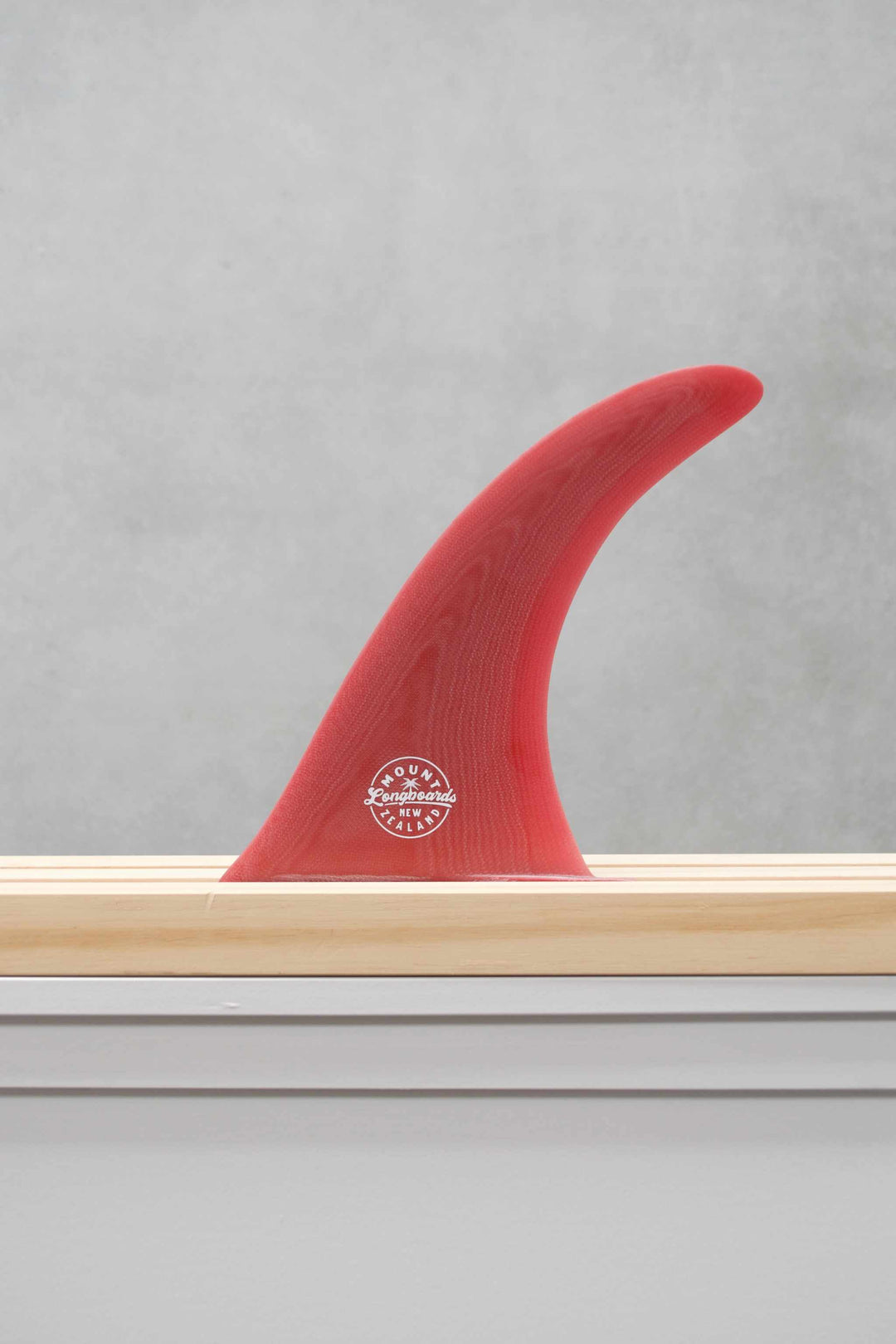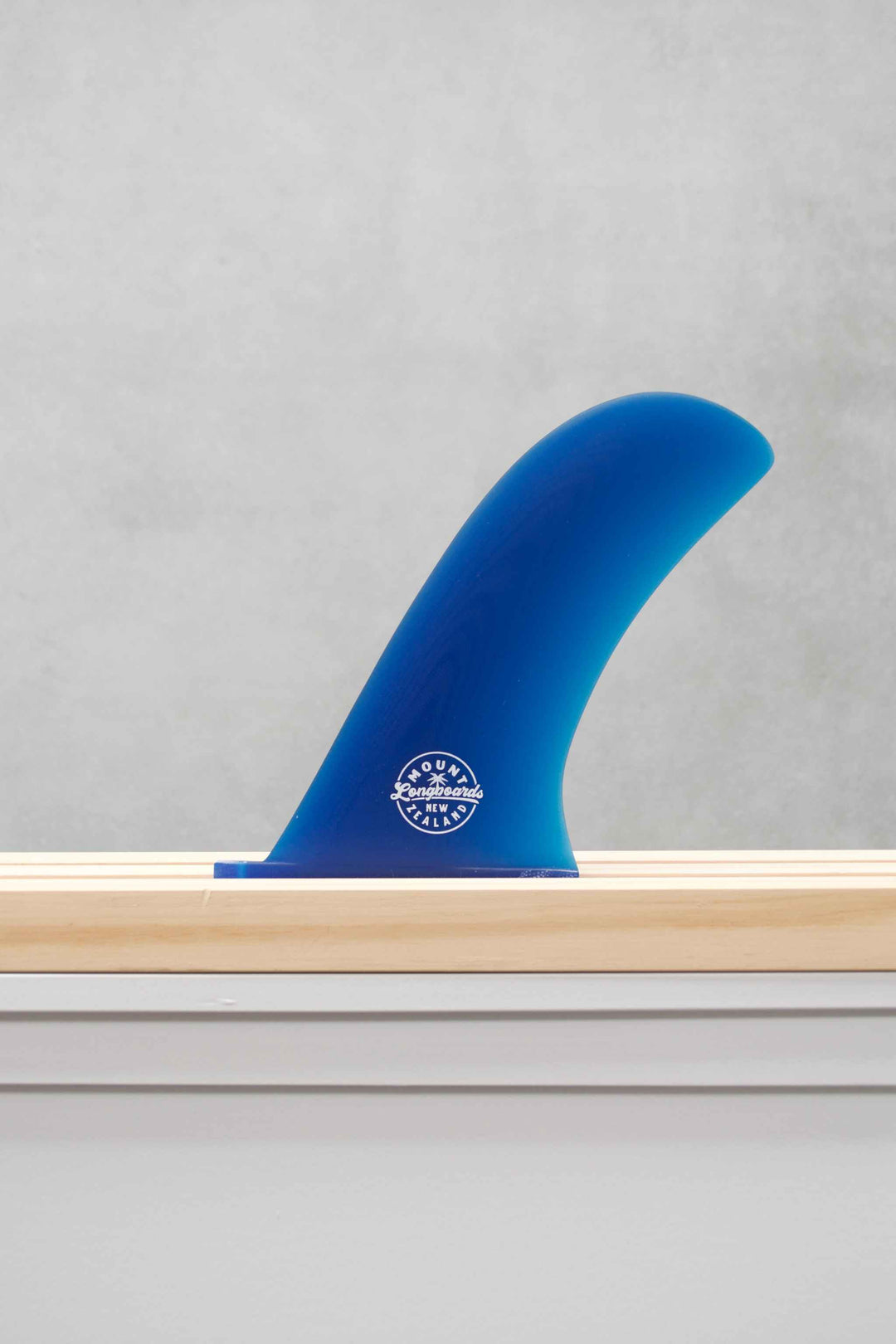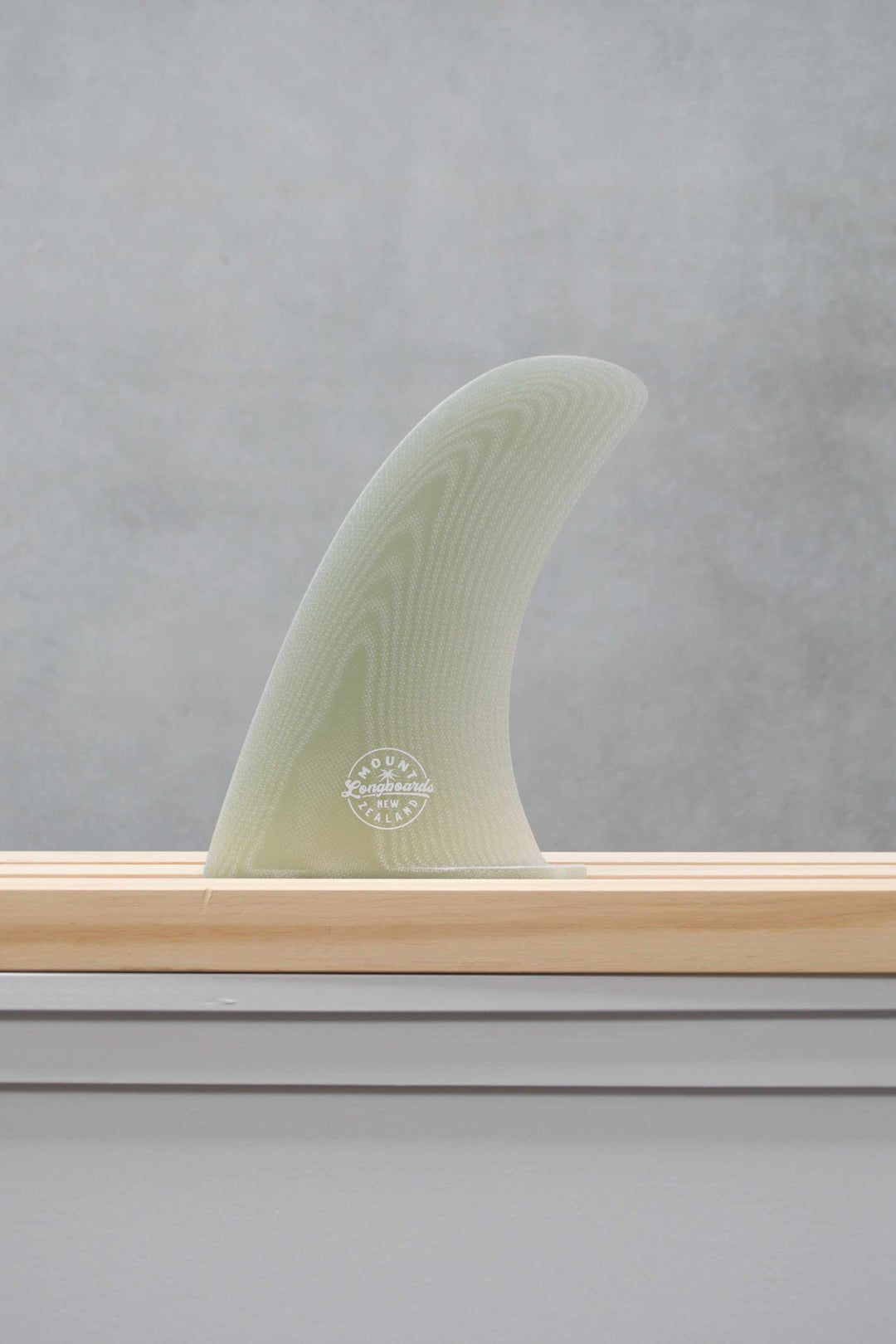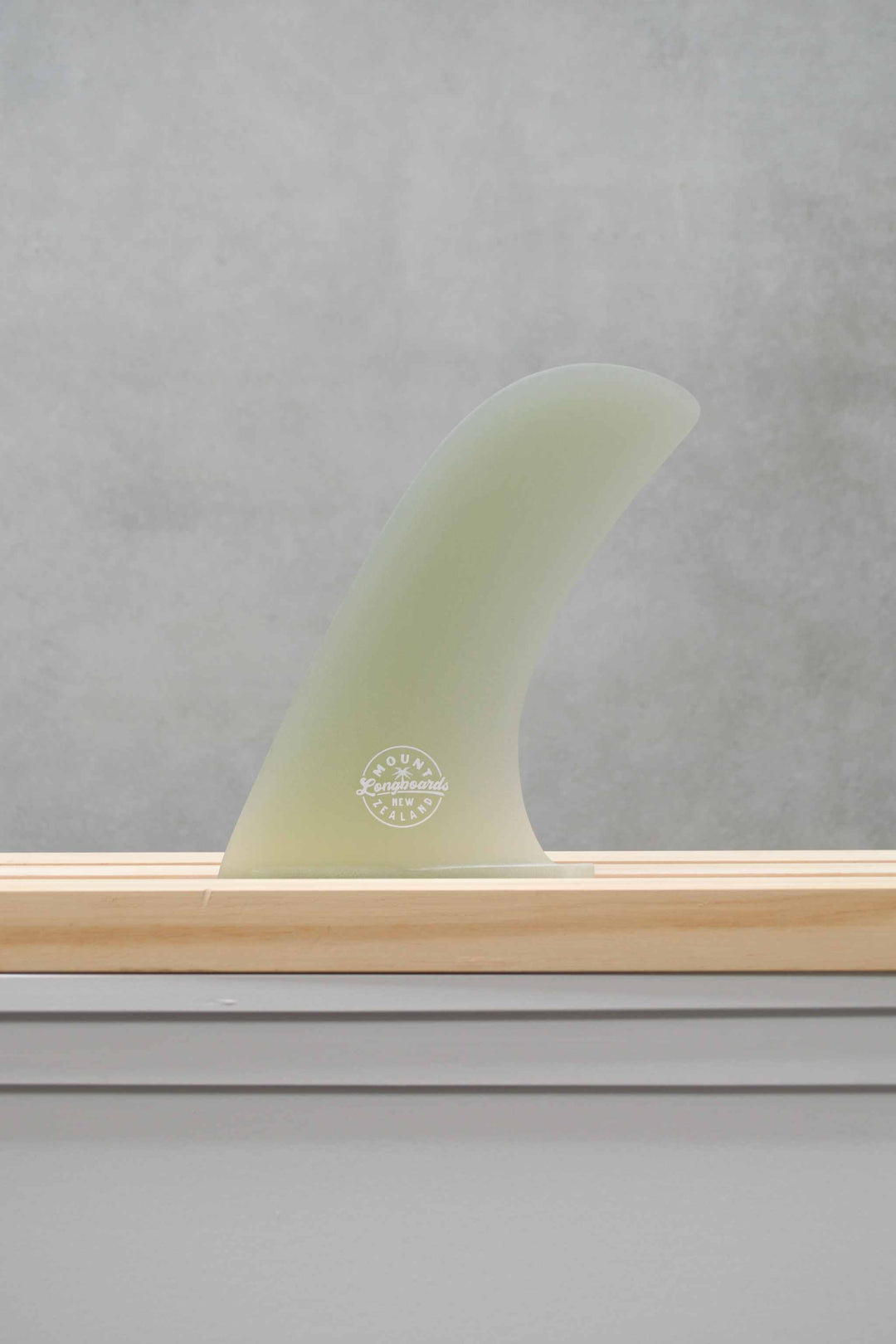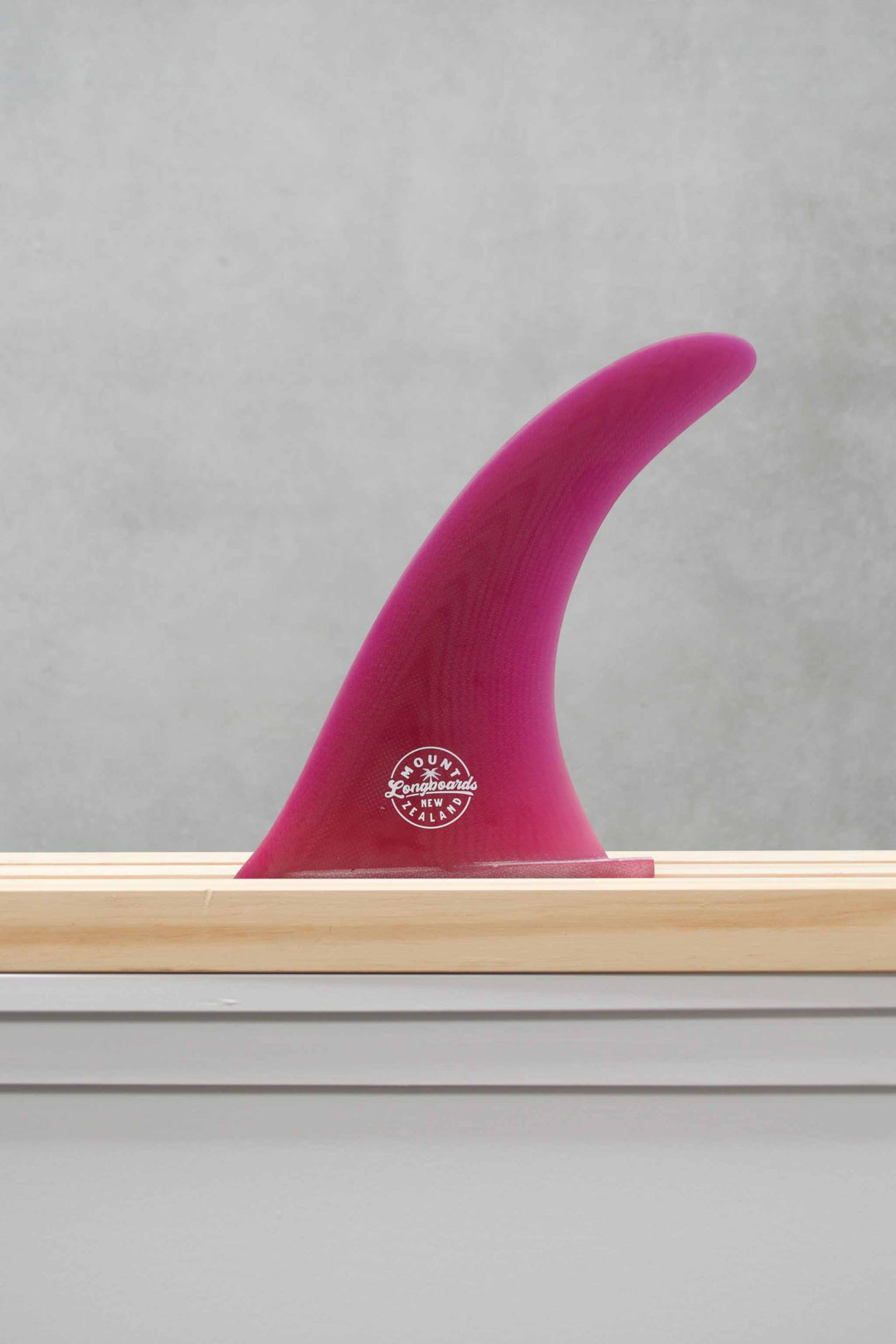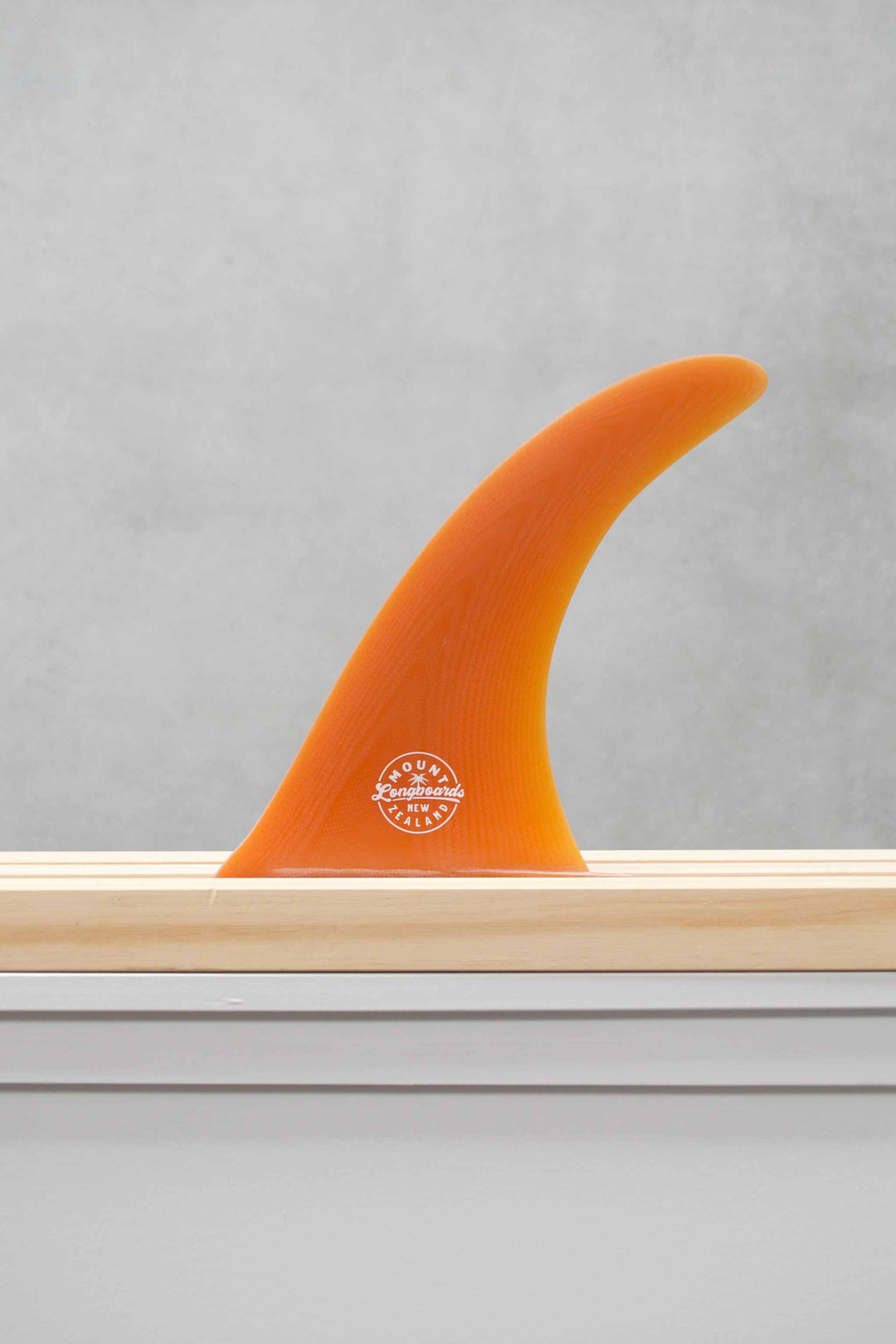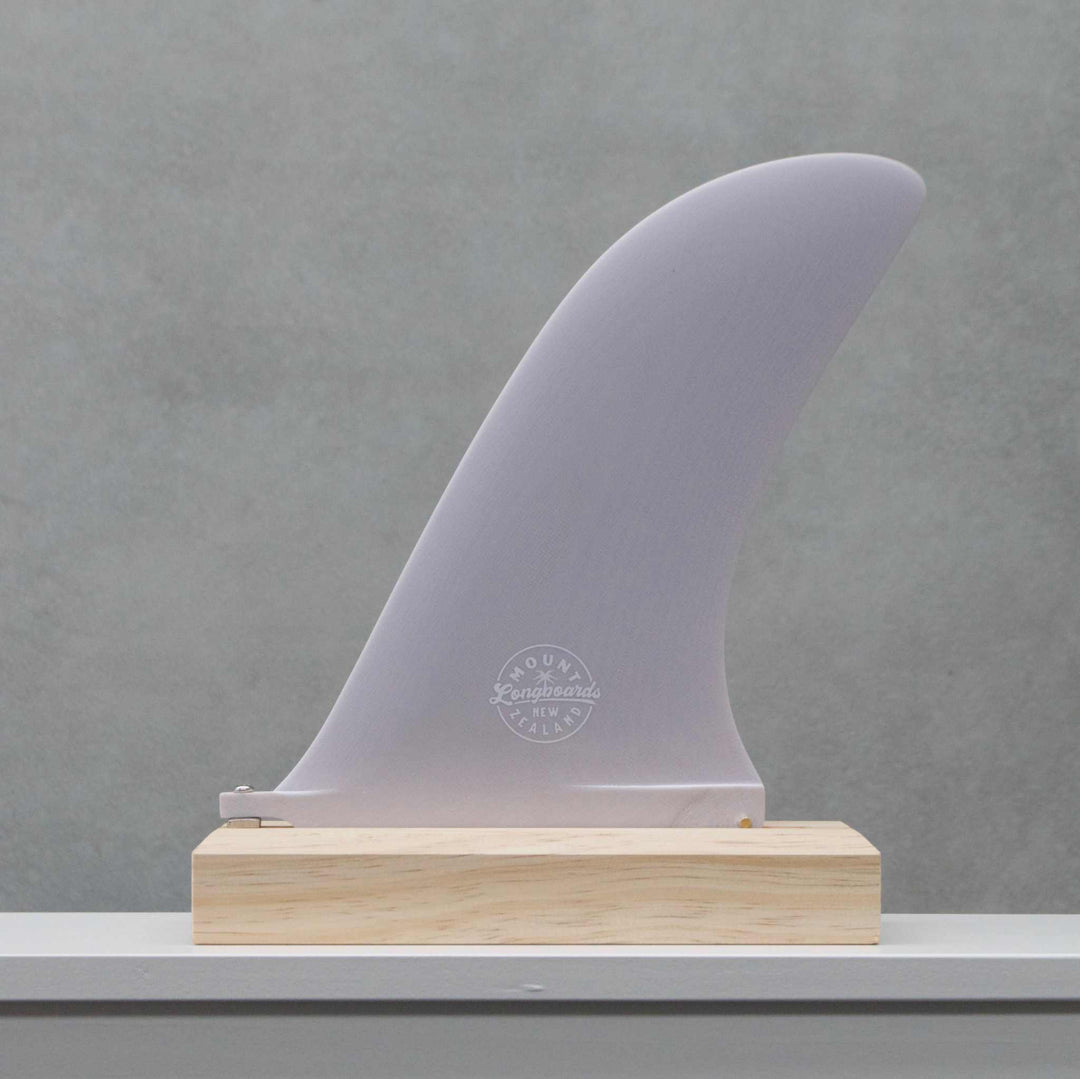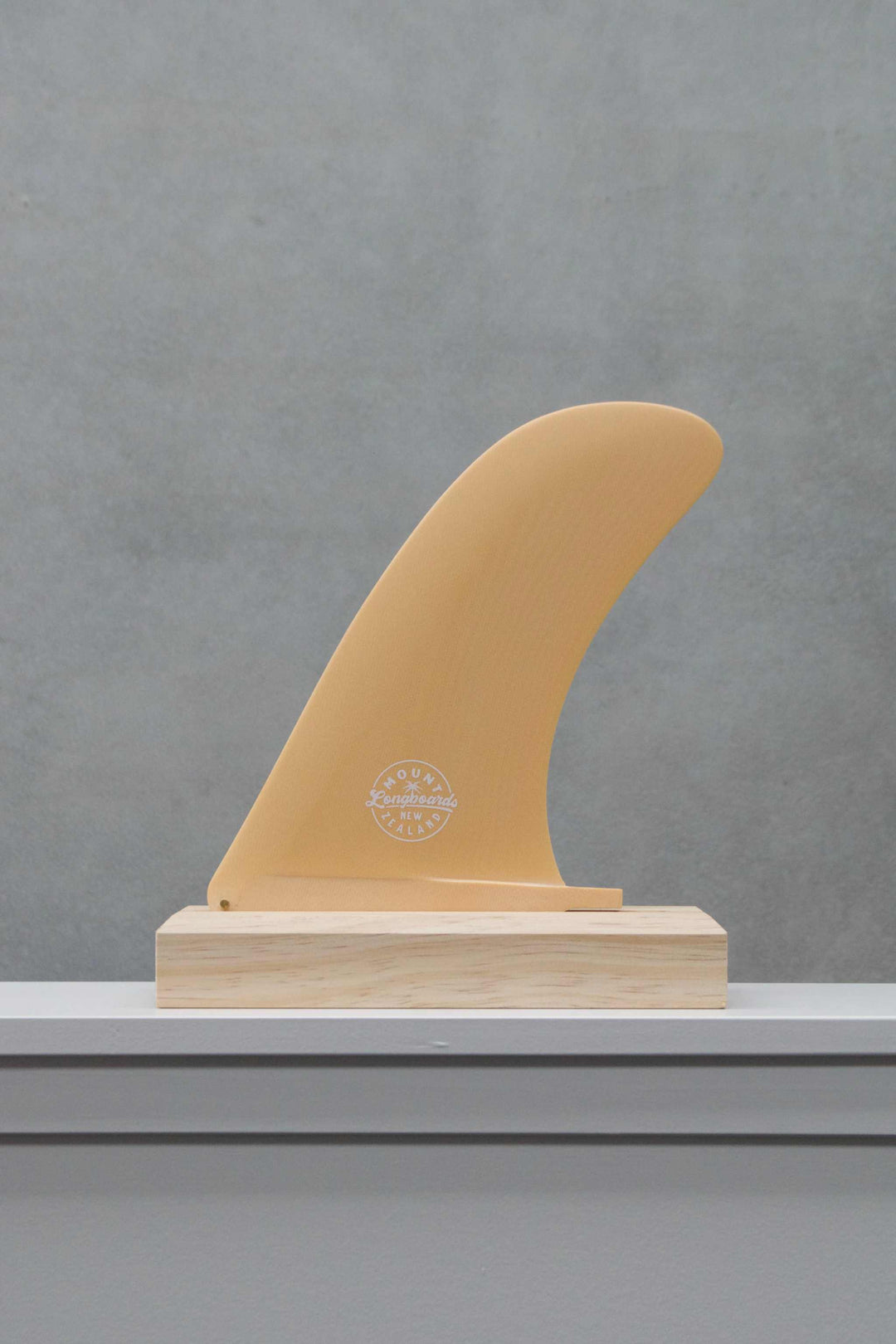Fin Guide
Choosing a Fin Shape
When choosing a single fin for your longboard, the shape plays a crucial role in how your board performs. Here, we’ll break down three common types: the everyday standard fin, the pivot fin, and the hatchet fin.
SUMMARY
- For an all-around fin for different conditions and a mix of turning & nose-riding → Standard Fin (best for all-around performance).
- For pure nose-riding with stability → Pivot Fin (keeps the tail locked in place).
- For the ultimate nose-riding experience → Hatchet Fin (maximum hold & drag).

Standard Fin (All-Around Fin)
- Medium base width with a moderate rake (curve backward).
- Balanced between stability and manoeuvrability.
- Works well in a variety of surf conditions.
The backward curve, or rake, of the fin helps water flow smoothly past it, reducing drag and allowing for longer, more fluid turns. Its moderate base width adds stability while also generating and maintaining speed down the line. This balance of hold and manoeuvrability makes the standard fin a versatile choice, offering the control needed for carving turns while still providing enough stability for nose-riding. Overall this type of fin provides excellent manoeuvrability, making them ideal for navigating unpredictable beach breaks that require quick adjustments and responsive turning.
Best For:
- Surfers who want a versatile fin for both turning and nose-riding.
- A balanced performance across different wave conditions.
- Everyday longboarding, including both traditional and progressive styles.
Pivot Fin
- Large surface area with a wide base and almost no rake (nearly vertical shape).
- Prioritises stability over turning ability.
- Excellent at keeping the tail in place while nose-riding.
The vertical shape of the pivot fin creates significant resistance in the water, keeping the tail firmly in place and preventing it from sliding out. With minimal rake, the board remains more upright, making it easier to execute pivot-style turns from the tail rather than smooth, carving turns. Its wide base adds extra hold and drag, further locking the board in place and providing the stability needed for controlled, extended nose-rides.
Best For:
- Dedicated nose-riders who want maximum hold and control when walking to the front of the board.
- Traditional log surfing, where slow, controlled movements are prioritised.
- Surfers who prefer sharp pivot turns rather than smooth carves.
Hatchet Fin
- Similar to a pivot fin but with a wide, blunt top and a thicker base.
- Even more surface area than a pivot fin.
- Designed specifically to enhance nose-riding performance.
The blunt, hatchet-like shape increases drag, slightly slowing the board and giving the rider greater control during nose-rides. Its extra-wide top generates more lift at the tail, helping to keep the nose higher and allowing the surfer to stay on the front of the board for longer. With a thick base that locks the tail down even more than a pivot fin, the hatchet fin provides unmatched stability, making it the ultimate choice for dedicated nose-riding.
Best For:
- Surfers who want maximum nose-riding hold and stability.
- Classic longboarders riding heavy single-fin logs.
- Waves that allow for long, drawn-out rides with cross-stepping and hang tens.
Other factors
The placement of your fin can drastically change your ride—move it forward in the fin box, and you’ll feel your turns become looser and more responsive, allowing for a freer, more dynamic ride. But slide it further back, and you’ll unlock greater stability and hold, perfect for carving with confidence. Fin size also plays its part: larger fins anchor you to the board, offering more hold and stability, while smaller fins give greater manoeuvrability, giving you that agile, quick-turning feel. Then there’s flex—stiffer fins bring a more controlled, powerful drive, holding their ground even through rough terrain, while flexible fins add a lively, almost playful vibe, making each turn feel effortless and fluid.





